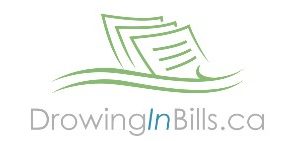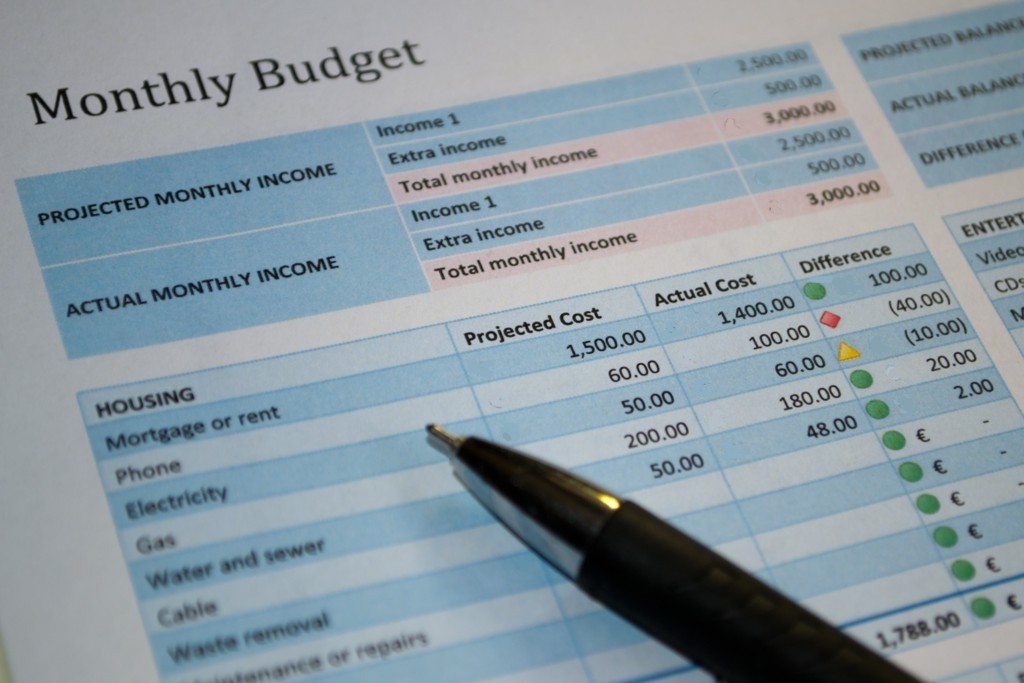Let’s face it, most of us never received any formal education on how to pay bills, budget, and manage debt. As a result, we often don’t have a knowledge base we need to foster financial stability. The key to getting your finances on solid ground is to understand how debt payments and other bills work, so you can develop the right strategy to manage each obligation that you have.
This guide will teach you how debts and other bill payments can differ. Then you can develop a budget that makes it easier to manage all your monthly payments.
Understanding the 3 types of expenses in your budget
Every budget has three basic types of expenses:
Fixed expenses
Fixed expenses are necessary expenses that have a set monthly cost. The amount you are expected to pay stays constant from one month to the next. Most fixed expenses are bills, such as your mortgage or rent payments, car loan payments, insurance payments, and student loan payments.
Fixed expenses are generally the easiest to manage because you know exactly how much you need to pay.
Flexible expenses
Flexible expenses are also necessary expenses in your budget, but they don’t have a fixed cost. The amount you’re required to pay can change from one month to the next. This includes bills, like utilities and telecommunication services, as well as other necessary expenses, such as groceries.
Flexible expenses tend to be more challenging to manage in your budget because the cost isn’t set. You may need more money to cover a bill than you intended. However, some strategies can help you manage these expenses effectively, so you’re never short.
Discretionary expenses
The final type of expense covers your wants. Discretionary expenses are the nice-to-haves in your budget that are not necessities. Bills that are discretionary include subscriptions for streaming services, magazines, and newspapers. They also can include services, such as landscaping and house cleaning, which you don’t necessarily need to pay someone to do.
Discretionary expenses can easily overwhelm your budget if you don’t keep them in check. On the other hand, these are also the expenses you can cut to get back to solid financial ground.
Looking for help with your Credit Card Debt?
Call (844) 780-4286
Building a budget that helps you get on solid ground
Now that you understand the basic types of expenses that make up a budget, you can start to build your own. As you work, remember that the goal of budgeting is to achieve stability. This means that your expenses need to be balanced against your income, so you don’t start to sink under the weight of everything you need to cover.
Follow these steps to make a budget that will help you stay afloat.
Step 1: Total up your income, based on what you really earn
The first step to setting a budget is to know how much income you have available to work with. This means totalling up the monthly income that you receive. This includes:
- Paycheques
- Part-time wages
- Pay for freelance or consulting work
- Income from a side business
- Child support and alimony payments
- Pension disbursements
- Veteran’s benefits
It’s important as you total up your income to plan for the income you receive and not the income you should receive.
For example, if you are supposed to receive child support or alimony payments as part of your divorce decree, but your ex-spouse doesn’t always give you the money promptly, don’t include this in your income calculation. This will help you avoid a situation where you allocate income to cover expenses and then don’t receive it.
Step 2: Factor in your fixed, flexible and discretionary expenses
Next, you want to detail all of your monthly expenses.
- Start by detailing your fixed expenses, since these tend to be the highest priorities in your budget.
- Then move onto your flexible expenses. These tips can help
you determine the right amount to set for expenses that can vary:
- For bills that vary in cost throughout the year, it’s a good idea to find the highest bill amount from last year. Then set this amount in your budget, so you know you can always afford the payments.
- For flexible expenses like groceries or gas for your car, take a three-month average of what you spent on each expense. Then set this as a spending target.
- Finally, add in your discretionary expenses. You add these
in last because they are the first expenses to cut if you need to generate
extra cash each month.
- Make sure to include all of the incidental little expenses you have each month, including your morning coffee, trips to the vending machine, and other small costs that may seem insubstantial.
- You may also want to consider dividing some expenses between what’s necessary and what’s a luxury. For example, food is a necessity, so groceries are a flexible expense because you need to eat. On the other hand, dining out may be a discretionary expense.
Step 3: Balance your expenses against your income
Now, you should total up your expenses and see how the amount compares to your monthly income. At a minimum, you want to make sure that you spend less than you earn each month. Your income should always be higher than your expenses.
However, that only ensures you barely scrape by each month. You’ll be living paycheque to paycheque, which isn’t where you want to be.
Your real goal should be to balance your expenses against your income so you only spend about 75% of what you earn each month. This will leave you with ample free cash flow, which is extra cash in your budget that you can use to cover unexpected expenses that inevitably arise every month.
Savings versus free cash flow
It’s important to note that you should plan savings into your budget and that free cash flow and savings are not the same things. If you leave savings to be “whatever money you have left at the end of the month,” it often assures that you never end up saving anything.
Instead, saving money needs to be a planned fixed expense in your budget. Once you total up your income and expenses, see how much money you would have available to save. Ideally, you want to save 5-10% of what you earn each month. But even if you can only save 1% or less, you should determine what the amount is and set it as a fixed expense.
That amount should be part of the 75% expense calculation. Then, in addition, you have the free cash flow to cover those unexpected expenses. This will ensure you can save and that the money you set aside won’t get drained every month covering unexpected costs.
Step 4: Find expenses that you can cut or cut back
Once you see your expenses detailed out, you can start to see where you may be wasting income each month. For example, you’ll see just how much you spend for that morning trip to the coffee shop or how much income you take to go out to lunch with your coworkers every day.
If you see you have an expense that’s draining your income (also known as a spending leak) you should close it. These tips can help you get started:
Looking for help with your Credit Card Debt?
Call (844) 780-4286
Evaluate your streaming services and subscriptions
If you have duplicates or overlapping accounts, such as multiple paid music or movie streaming services, try cancelling a few and limiting yourself to one subscription. The same is true with magazine and newspaper subscriptions.
Don’t pay for services you can do yourself
It may beeasier to pay someone to clean your house, but if you can save that money by taking a few hours each week to clean it yourself, it could be worth the cost-savings.
Cut back on dining out, increase your grocery budget
As mentioned above, it can be useful to divide your food expenses between groceries (a flexible expense) and dining out (a discretionary expense). This will allow you to scale back on food costs. You should be able to decrease your dining out budget significantly and only need to increase your grocery budget by a little to offset it.
Review bills to see if there are ways to reduce the cost
This is especially useful for flexible expense bills, such as your home phone and internet or mobile and cellular service. There may be features that you’re paying for in your plan that you don’t need or use. Cutting these features can help lower your bill payments.
Also, check your monthly mobile service statements to see how much data you use. You may be paying for an unlimited plan when you don’t need it.
Finally, see if your electric bills have remained consistent across time. If you spent more this past November to heat your home than you did the year prior, it could be a sign that you need a home energy audit.
Managing debt payments: Installment versus revolving
Just like necessary expenses can be fixed or flexible, so can your debt payments. Most debts are fixed expenses because they get paid in installments, including:
- Mortgages
- Auto loans
- Student loans
- Personal loans
Loans are considered installment credit because you borrow a set amount of money that you pay back with fixed payments over a set time.
On the other hand, credit card bills are often a flexible expense because they are a type of revolving credit. With revolving credit, you have an open credit line that you can borrow against as needed. The monthly payment is typically set by taking a percentage of the current balance, known as a minimum payment requirement.
Revolving credit includes credit cards and lines of credit (LOCs). These can be trickier to manage because the payments can change. The more you charge, the more you’ll be expected to pay.
But this can leave you between a rock and a hard place. If you charge too much, your payments will increase. This will limit the free cash flow you have available to cover unexpected expenses. As a result, you may have an expense you can’t cover because your bills are too high. So, you use a credit card to cover it, which just increases your payment requirements further.
This vicious cycle is why credit cards are the leading culprit of financial instability. If you’re carrying multiple credit card balances, you will likely need a specialized strategy to pay them off. This is often the key to stop drowning in your bills.
With that in mind, we’ve created a separate guide to help you learn how to control your credit card bills.
Stop drowning under credit card debt payments »





